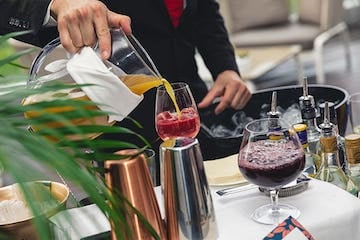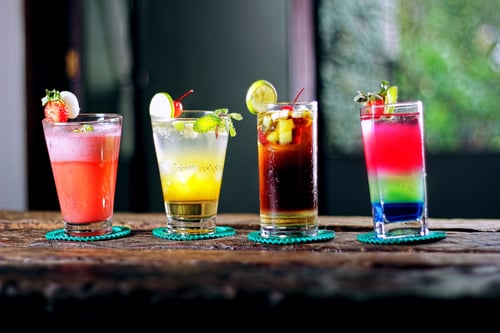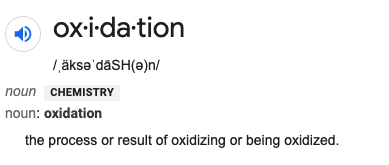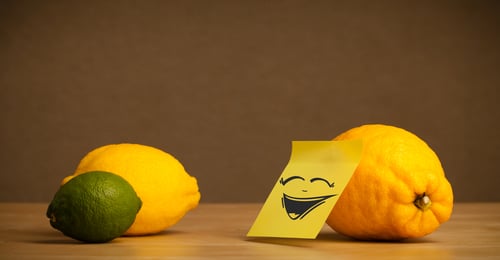The problem with craft cocktails is that they're time-consuming to make. Sure, there are speedy bartenders working in wells who can keep up by mixing multiple 4- or 5-touch cocktails simultaneously. But in a busy bar or restaurant, timing is crucial. And the seconds add up when you're slammed. One smart way to save time when mixing drinks is to pre-batch cocktail ingredients. By batching cocktails before service, bartenders can make drinks faster and servers don't have to deal with impatient customers who feign they're dying of thirst. Guests will get their drinks sooner, which gives them more time to order another round and spend more money. It's a real win-win we're talking about here.
There are some things to know about premixed cocktails, so let's take a look at batching best practices.
5 ways batching cocktails helps your restaurant or bar
Premixing cocktail ingredients is a useful strategy for improving performance and efficiency behind the bar. When implemented properly, batched cocktails can have a positive impact across different areas of service.
1. Making drinks faster
A good bartender is fast, efficient, and economical with their movements behind the bar. And even when pumping out drinks, they're mindful of guests and provide welcoming hospitality.
Craft cocktails can often have 4 or 5 ingredients in them and call for precise pours that require jiggers to maintain consistency. By batching cocktail ingredients before service, a bartender can cut down the number of bottles they need to grab and the ingredients they need to measure. In a busy bar, the time saved on each drink adds up.
This helps bartenders make drinks faster which means less stress and chaos behind the bar. A calm bartender is always more inviting for guests than a frantic one, which promotes the theater of a bartender and being taken care of by a professional.
2. More time to focus on guest service
 Bartending exists at the intersection of service and production. It's a position that overlaps with the chefs and cooks working tirelessly in the back-of-house and the servers on the floor handling guests and being ambassadors for the restaurant.
Bartending exists at the intersection of service and production. It's a position that overlaps with the chefs and cooks working tirelessly in the back-of-house and the servers on the floor handling guests and being ambassadors for the restaurant.
During a busy service, when the dining room is full and guests are lining up at the bar, even the best bartenders can fall behind and get lost in the weeds.
When this happens, some aspects of service will suffer. Often times the first casualty of a busy restaurant is high-quality guest service. Unfortunately, when service lacks, tips and potential earnings for bar staff go down.
By saving time on making drinks, bartenders can handle more guests and drink tickets without missing a beat on service. This is good for the guest and for the tip pool.
3. More opportunities to increase customer spend
Faster and more engaged service creates more chances for guests to order a second or third round of drinks that they might not have had otherwise. The longer guests wait for drinks the less time they have to consume them and place another order.
And guests waiting for drinks are often focused on the fact that they haven't gotten their drinks yet, so faster service creates happy guests. Faster service can also increase sales, which will boost check averages and increase tips.
4. More consistent drinks

Even when measuring each cocktail ingredient with a jigger, cocktails can come out inconsistent. A heavier pour of whiskey here, a slight underpour on simple syrup there, and all of a sudden your old-fashioned doesn't taste like the last one you made.
Premixing drinks allows for more accurate pours and a balance of ingredients that increases consistency during service. For good restaurants and bars, it's not enough to be able to make a great cocktail or entreé, they need to consistently make great cocktails and entreés.
Pre-batched drinks help maintain consistent cocktails.
5. Reduce waste from mistakes
When a bartender is slammed it's easy to make mistakes. Multitasking is the superpower of bar staff, or even The Avengers screw up once in a while.
Whether the wrong juice gets poured or a cocktail shaker gets knocked over, mistakes happen and drinks have to get tossed.
By pre-batching cocktails you will reduce the opportunity for mistakes and ultimately reduce the waste and money lost in that waste. An efficient bar provides great service and turns profits. So cutting back waste is a good way to reduce the cost of
operating a bar.
What's the shelf life for batched cocktails?
One of the most common questions when it comes to pre-mixing drinks is, how long do pre-batched cocktails last? Making sure your cocktails taste like intended and are safe to consume is extremely important.
How long a pre-batched cocktail lasts depends on the type of cocktail and the ingredients used. Spirit-based drinks like the Manhattan or a Boulevardier can last for months when stored properly. The most perishable ingredient in both of these drinks is sweet vermouth, which lasts for a month or more with proper care.
On the other hand, if you were to batch a margarita or any cocktail that contains citrus or juice, the drink will only last a few days. Here are some common issues to account for with pre-batch cocktails
1. Oxidation changes taste
Here's the first result in Google when searching "What is oxidation?"

That's not very helpful if you don't know what oxidation is, thanks google. Collins Dictionary is more helpful, defining oxidation as "Oxidation is a process in which a chemical substance changes because of the addition of oxygen." Thanks, Collin.
This means that when cocktail ingredients like alcohol, citrus juice, and fruit juice, are exposed to oxygen the oxygen will eventually change the characteristics like aroma and taste of those ingredients.
Preventing oxidation in batched cocktails
So to create a longer shelf life for premixes you'll need to limit their exposure to oxygen. Here are some tips to do so.
Cap bottles at the end of the night
When breaking down the bar after service, put a cap back on each bottle of premixed ingredients to limit the oxygen that can come into contact with your mix. This is better than just putting plastic wrap or a loose-fitting pourer cover over a speed pourer.
If you don't want to cap bottles each night, make sure to use the slim, tight-fitting pourer covers.
Keep bottles full
It's not just air from outside the bottle that can speed up oxidation. The less liquid in a bottle allows for more air in the bottle. By keeping bottles topped of you can reduce the amount of air exposure in the bottles.
Use a wine pump to remove excess air
If you have a wine pump behind the bar that you used to pull air out of wine bottles, you can use that to pull air and preserve your cocktails
2. The shelf life for fresh juices
 A key component in cocktails is citrus juice. Whether lime or lemon, these acids brighten up drinks and help flavor pop. The only issue is, fresh citrus juice doesn't last long.
A key component in cocktails is citrus juice. Whether lime or lemon, these acids brighten up drinks and help flavor pop. The only issue is, fresh citrus juice doesn't last long.
With batched cocktails, it's really important to date ingredients and mixes. This will let you know when it's time to toss unused ingredients so you maintain the quality of your cocktails.
How long does lemon juice last?
According to Still Tasty, who sources their information from the FDA and other government agencies, "Freshly squeezed lemon juice that has been continuously refrigerated will keep for about 2 to 3 days."
Lime juice has the same shelf life, so it's important to keep an eye on your ingredient dates.
If you stored your citrus juices properly, you shouldn't get sick after a few days, but the taste of the citrus juice will turn and become more sour or bitter, and can negatively affect the taste of your cocktails.
For other fresh juices you like pineapple juice, you should stick to the 2-3 day rule.
Preserving freshly squeezed juices
Reduce exposure to oxygen and bacteria
The same issue of oxidation applies to fresh juices, but they are even more prone to spoiling than vermouth. Keep juices sealed tight and refrigerator to avoid oxidation and more importantly exposure to bacteria that can spoil perishable items and cause issues like food poisoning.
Date your juices and all mixes
When you make a batch of fresh juice or create a premix always make sure to date the bottle so you if it's safe to use. Make sure the date is legible and easily seen.
Keep Chilled at all times
Of course, you should refrigerate your juices when not in use during service, but keeping them in the fridge makes them less accessible. If possible, during service you should keep your juice mixes on ice. This needs to be a separate contained of ice from the one you use to ice drinks for guests, otherwise, that would be a health code violation.
3. Keep spirit mixes and juice mixes separate
Because the spirits can last indefinitely and juices have such a short shelf life, it's important to keep premixes of juices separate from spirits. Otherwise, you may have to throw out much more costly spirits with juices if you don't pour through a pre-mix in time.
It's okay to mix juices and simple syrup
If you have both fresh juice and simple syrup or simple syrup infusions it's fine to mix those ingredients together in a pre-batch.
A regular simple syrup made with a 1:1 ratio of syrup: water should last for a month with proper storage. While that is much longer than the shelf life for fresh juices, the low cost of simple syrup has less of an impact on your bottom line if you do need to toss it early.
4. Track cocktail sales to reduce ingredient waste
Because two of the goals of batching cocktails is to reduce waste and improve profits behind the bar, you want to make sure you're making the right amount of premix to meet demand but not create additional waste.
By tracking sales and usage rate for your ingredients through your point-of-sale or through a bar inventory app you will know how many drinks you sell on average in a given time period.
Once you know this, you can figure out how often you need to make juice and syrup mixes and the quantity to make them.
Create a schedule for mixing and juicing and stick to it to keep ingredients fresh and waste low.
5. How much water to add to batched cocktails
Some bars and restaurants will offer cocktails on draft which means they need to be pre-diluted with water. Even if you don't have a cocktail on draft, you may have a pre-batched Manhattan or old fashion that you keep chilled and pour over ice without stirring.
In these situations, you'll need to add water to your cocktail ahead of time to make up for the dilution that occurs when stirring or shaking a cocktail.
When diluting a cocktail, you want to at 25% or 1/4 of the total liquid volume of the drink in water, which is generally the amount of dilution added to the cocktail when shaken or stirred over ice.
Let's use Manhattan as an example. Here's the recipe
Rye whiskey: 2 oz.
Sweet vermouth: 1 oz.
Total liquid volume: 3 oz.
Water volume to add: .75 oz.
So you'll want to add .75 oz. of water to your pre-batched Manhattan. For large batches, you'll of course have to scale up your recipe. To help make creating batched cocktails easier, you download our Cocktail Batching Calculator:



